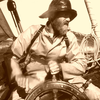Lots to discuss in this email from Mike:
Most honorable Mr. Panbo,
when the Class B AIS thing finally got moving,
several folks were busily making "all-in-one"
Class-B AIS transponders which had all the
hardware in a single radome housing that
contained the VHF radio, the GPS, and the
microprocessor. The great thing was they
would mount on a standard 1-14 marine
base and the only cable would carry
DC and Data - no RF so no coax.
has the earth simply opened up and
swallowed these efforts? Do you know of one?
I really don't want to mount *yet another*
GPS mushroom (that would be number 5) which
needs ultra-low-loss coax as well as the RG-213
for the VHF stick fished down from the
antenna mast, plus find space for yet another
box designed by someone who assumed
I'd rearrange my entire helm just to have their AIS.
I know why the AIS things want their
own GPS, at least for Class A transponders,
but it raises the question of just how many GPS
units are we going to have on board? Granted,
they are cheap now and redundancy is good,
but *managing* redundancy so it is usable
is hard.
Now are you sitting down?
I'll happily stipulate that N2K would make it
a lot easier to share a single GPS with multiple
clients for navigation and positioning purposes.
That handily solves the authority problem (ie, which
GPS are we supposed to believe?).
It would also likely make it easier to have a standby
GPS that would take over if it failed to hear the
primary unit after some time-out, and none of
the clients using the positioning and nav data
would necessarily have to care about the switch-over.
That's the power of multicasting to implement
a publish-and-subscribe data model. (Invented
by the folks at Xerox PARC when they did Ethernet. Grin)
However, AIS uses GPS for *timing* as well,
very fine-grained sub-millisecond timing for doing
the channel access protocol. CANbus-based N2K
isn't remotely fast enough to distribute that kind of
timing information, however the IEEE-1588 Ethernet
precision timing facility can maintain distribute
timing with sub-microsecond resolution and precision.
That would argue for GPS Mushrooms speaking shielded
Cat5E/6 down to a hub or switch that supports 1588
and interconnects "helm cluster" boxes that need
high performance data moving or high-precision timing.
The switch could easily be housed in another box along
with the router to move redistribute the position/nav
data from the GPS onto CANbus N2K.


huh? ok, since I took the time to read that 3x I guess it's hard to walk away and not write something.
1 + 1 = 0
Done